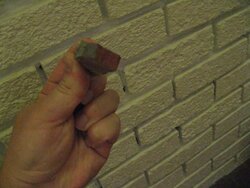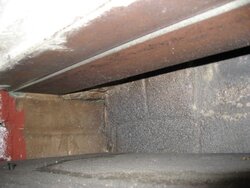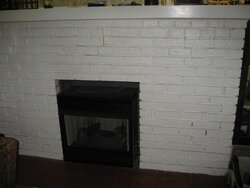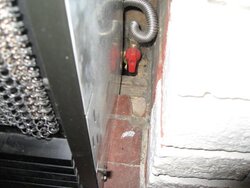- Oct 12, 2006
- 3
Greetings! I have, what may be an unanswerable question (at least online) but here goes...
I bought an old house near Cleveland, OH which was built in 1913. The house has a brick fireplace that was blocked off with a bizarre wood "plug" that the previous owner had installed. No evidence of a wood grate or gas insert was found when I popped the plug out. I can't tell if there are any soot or ash stains because some previous resident painted the inside of the fireplace. There is an old gas knob inset into the floor about 4 feet to the side of the hearth. The fireplace was used for something at some point in time (obviously gas was involved, but I have no idea if this was original or not).
The house has a chimney about 28 feet high. It's brick, but it's pretty darn skinny. I climbed up the roof and took a gander inside and the chimney seems to be lined with an orange clay (which I've heard may mean wood was involved). The liner doesn't poke outside of the chimney, it just stops where the brick stops. Also, the chimney's opening is only about 6" x 2".
There is a flue at the back of the fireplace that does look a bit sooty, but there is no hinged flue louver (however, I don't know that this means anything since my previous residence had an old, but working, woodburning fireplace that also did not have a louver).
The interior of the hearth looks pretty solid, no cracks and the morter seems intact. It's kind of a strange size - maybe 24" x 30" x 19" deep. My only real clue as to the original nature of the thing seems to be the floor of the fireplace. It's a thin brick tile. I broke out a chunk of it to run a gas line up from the basement to install a vent free (read: lame) gas insert.
Does this mean there was some kind of funky antique gas unit in the hearth? I've heard it was pretty uncommon for fireplaces to be only gas back when my house was built. Usually they burned wood or coal, right?
I'm going to have a chimney sweep out to look at it, but, as should be obvious by now, I really want to use this as a wood buring fireplace. Maybe I could have a wood insert installed, but I have no idea what would be involved with this, and what the restrictions would be. I'm not worried about using this a heat source as much as I want the ambienance of a real wood fire. Any pre-chimney sweep thoughts would be appreciated.
Many Thanks!
-SmokeyGecko
I bought an old house near Cleveland, OH which was built in 1913. The house has a brick fireplace that was blocked off with a bizarre wood "plug" that the previous owner had installed. No evidence of a wood grate or gas insert was found when I popped the plug out. I can't tell if there are any soot or ash stains because some previous resident painted the inside of the fireplace. There is an old gas knob inset into the floor about 4 feet to the side of the hearth. The fireplace was used for something at some point in time (obviously gas was involved, but I have no idea if this was original or not).
The house has a chimney about 28 feet high. It's brick, but it's pretty darn skinny. I climbed up the roof and took a gander inside and the chimney seems to be lined with an orange clay (which I've heard may mean wood was involved). The liner doesn't poke outside of the chimney, it just stops where the brick stops. Also, the chimney's opening is only about 6" x 2".
There is a flue at the back of the fireplace that does look a bit sooty, but there is no hinged flue louver (however, I don't know that this means anything since my previous residence had an old, but working, woodburning fireplace that also did not have a louver).
The interior of the hearth looks pretty solid, no cracks and the morter seems intact. It's kind of a strange size - maybe 24" x 30" x 19" deep. My only real clue as to the original nature of the thing seems to be the floor of the fireplace. It's a thin brick tile. I broke out a chunk of it to run a gas line up from the basement to install a vent free (read: lame) gas insert.
Does this mean there was some kind of funky antique gas unit in the hearth? I've heard it was pretty uncommon for fireplaces to be only gas back when my house was built. Usually they burned wood or coal, right?
I'm going to have a chimney sweep out to look at it, but, as should be obvious by now, I really want to use this as a wood buring fireplace. Maybe I could have a wood insert installed, but I have no idea what would be involved with this, and what the restrictions would be. I'm not worried about using this a heat source as much as I want the ambienance of a real wood fire. Any pre-chimney sweep thoughts would be appreciated.
Many Thanks!
-SmokeyGecko






